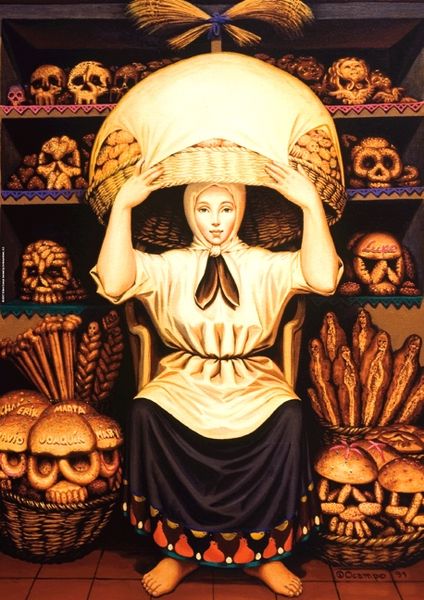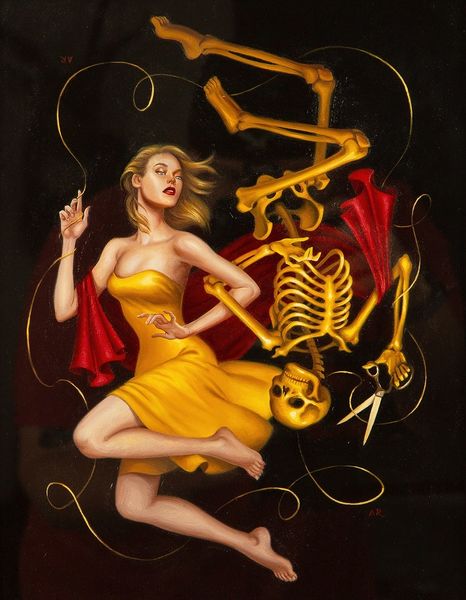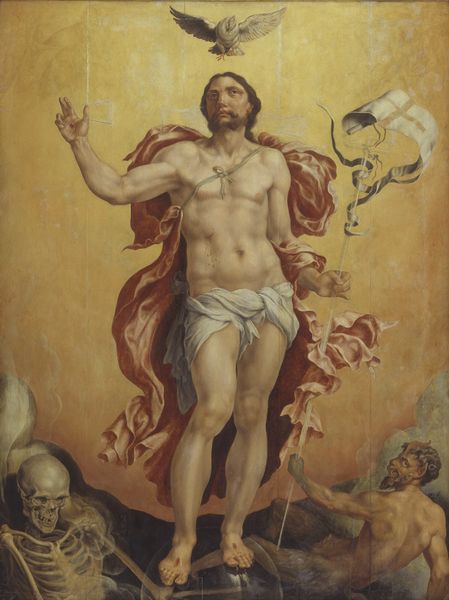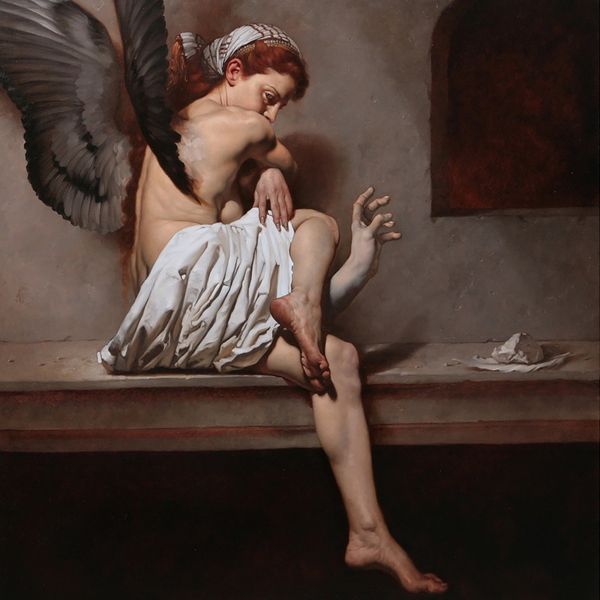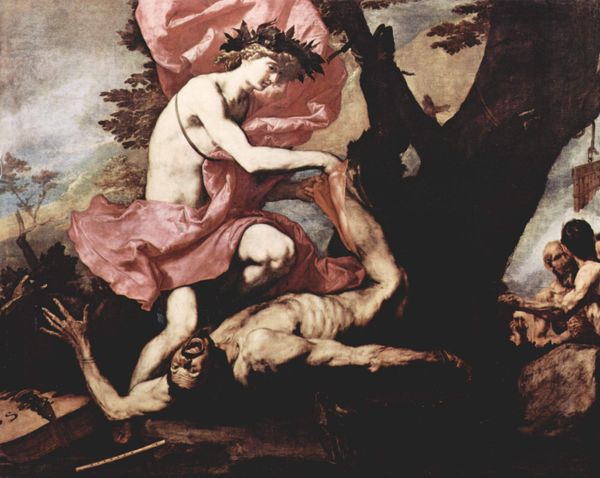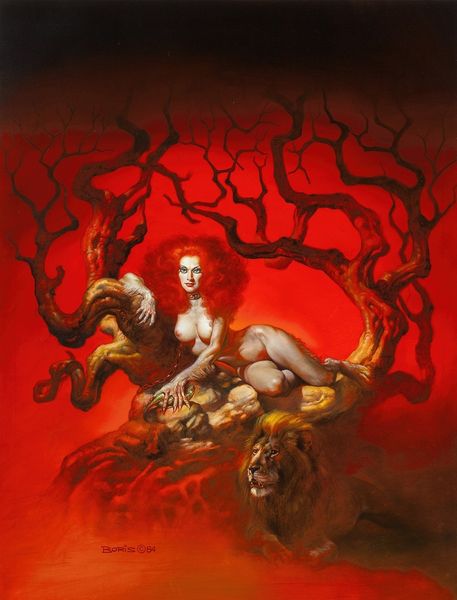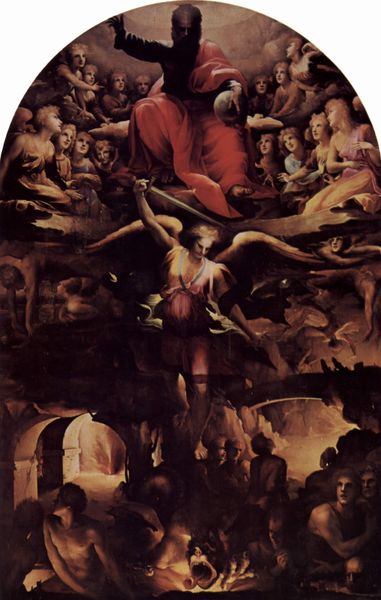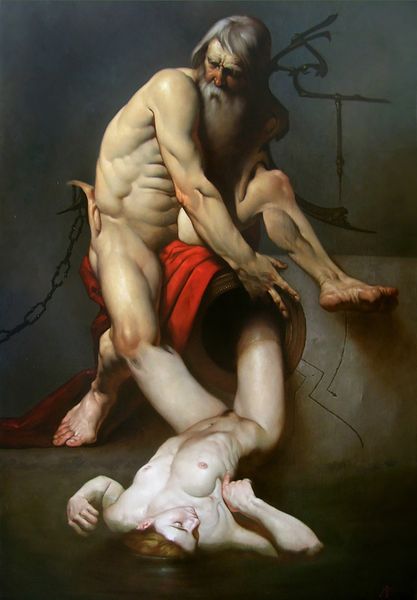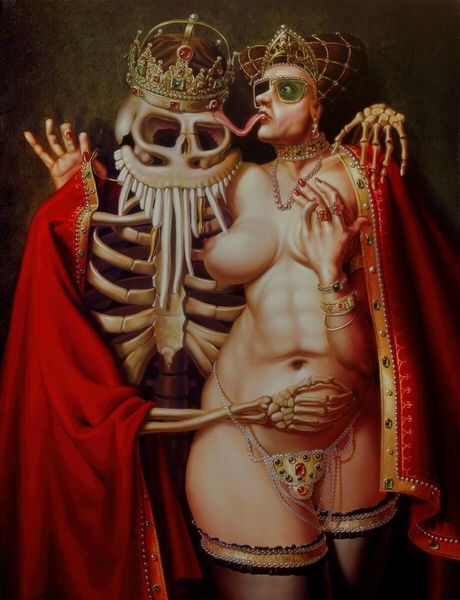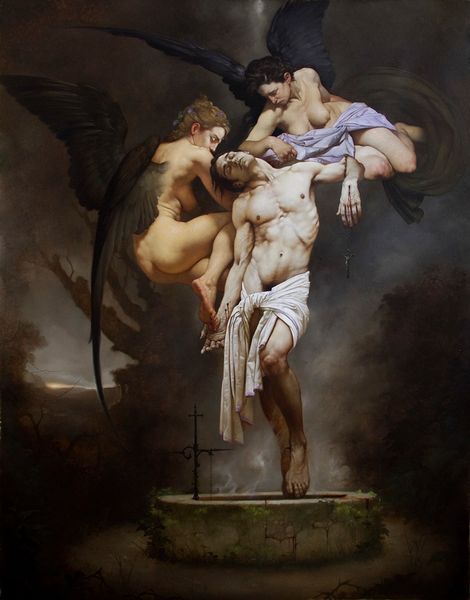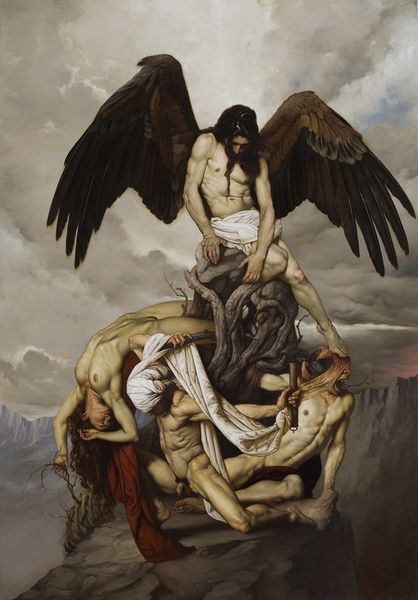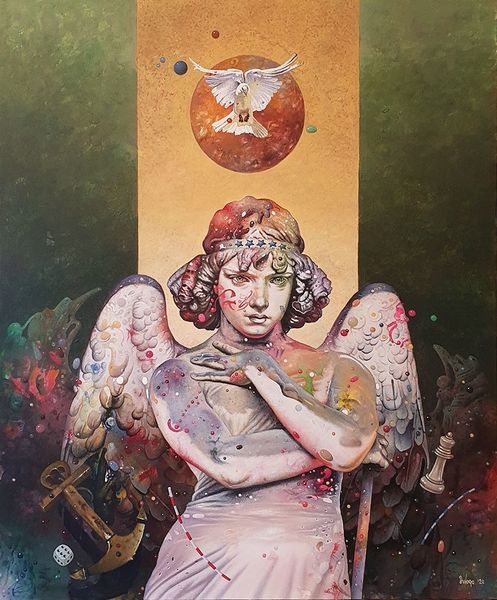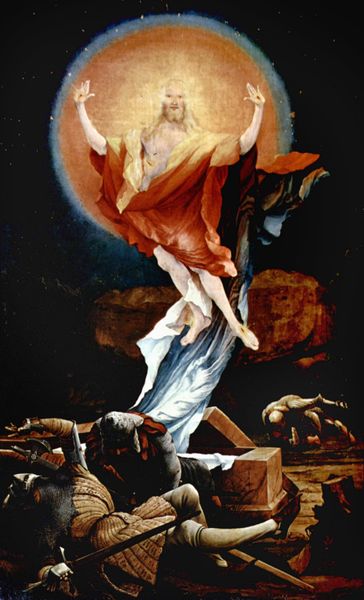
painting, oil-paint
#
portrait
#
allegory
#
painting
#
oil-paint
#
mannerism
#
figuration
#
11_renaissance
#
oil painting
#
vanitas
#
history-painting
#
northern-renaissance
Copyright: Public domain
Editor: This is Jan van Hemessen’s "Vanity" from 1540, an oil painting showcasing a winged figure contemplating a skull in a mirror. The overall mood is unsettling; the contrast between the figure’s delicate features and the stark skull creates a striking visual tension. What compositional elements strike you most? Curator: The figure's butterfly wings, placed asymmetrically, unbalance the composition, immediately disrupting any classical notions of beauty. Further, the figure directs our gaze, her index finger pointing toward a scroll wrapped around a mirror in which the skull is reflected; do you see how this mirror functions? Editor: It’s like a frame within a frame. The reflection highlights the skull. Curator: Precisely! Note the careful rendering of textures – the figure's translucent skin and soft curls contrast with the coarse texture of the skull. Consider the Mannerist conventions, such as elongated proportions, an affected pose, and exaggerated musculature, especially in her hands. What might the Mannerist style, which distorts natural forms, be meant to convey? Editor: Maybe that earthly beauty is itself a kind of distortion? The body might decay, like the skull, while the idea of beauty stays fixed. Curator: Indeed. The painting operates through a complex interplay of contrasts. Hemessen encourages viewers to actively decipher the iconographic program and invites reflection on our own mortality. Editor: The artist uses many cues that help to understand it. Thanks, that gives me much to think about regarding visual elements! Curator: My pleasure. It’s rewarding to explore these semiotic nuances in the image.
Comments
No comments
Be the first to comment and join the conversation on the ultimate creative platform.
